#Ursula Schulz-Dornburg
Text
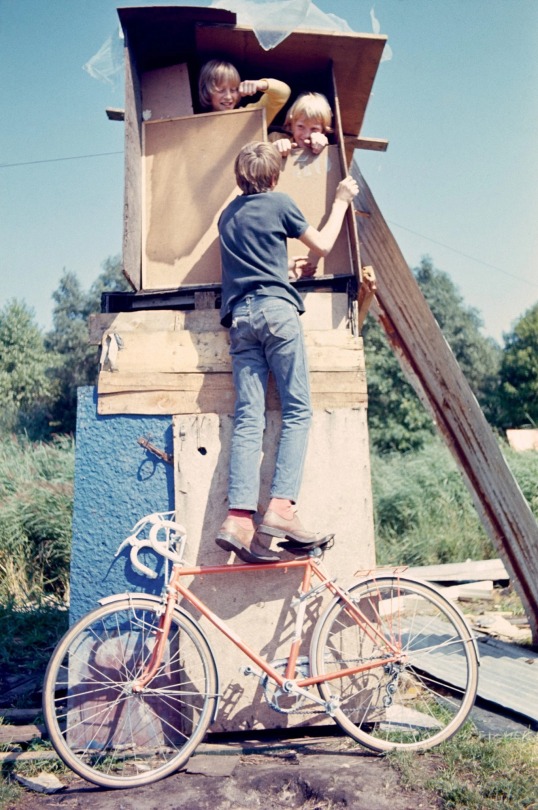

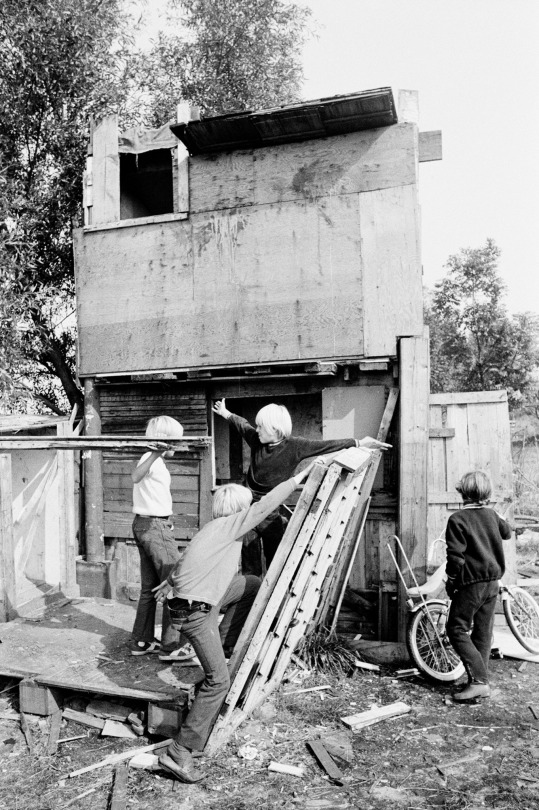
1960s “Junkology” photographs by German photographer Ursula Schulz-Dornburg in Jongensland, Netherlands; a only accessible by a rowing boat, and one of the many “junk playgrounds” created after World War 2.
The photos show how children turned scraps into self-built structures, known as junkology. Schulz-Dornburg adds that Jongensland is proof children’s ability to achieve anything when given the opportunity.
5 notes
·
View notes
Text
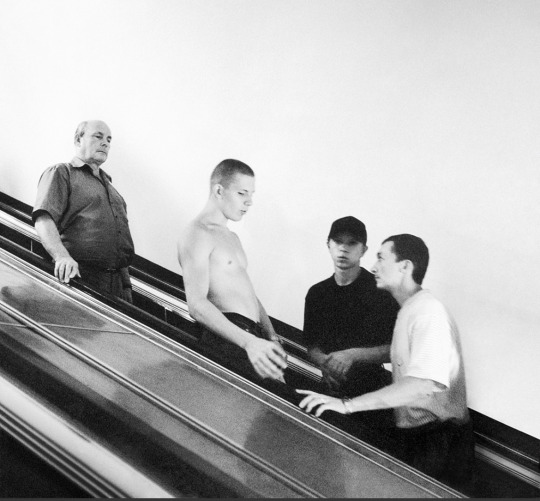
Ursula Schulz-Dornburg
Ploshchad Vosstaniya, Skt. Petersburg, 2005
0 notes
Photo
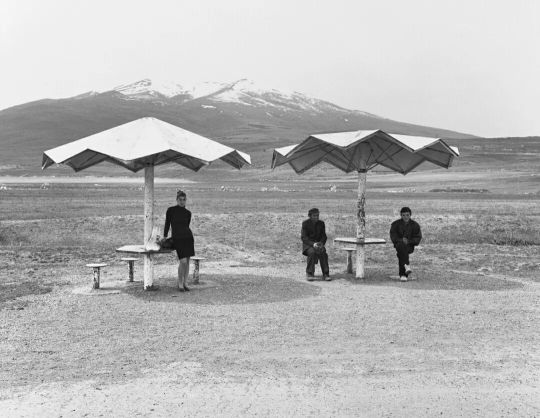

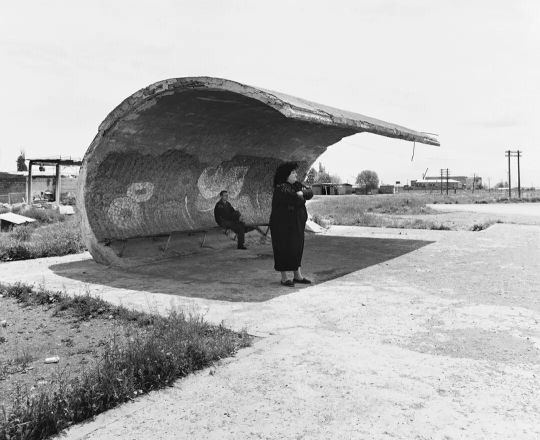
Gimme shelter, Ursula Schulz-Dornburg
543 notes
·
View notes
Photo
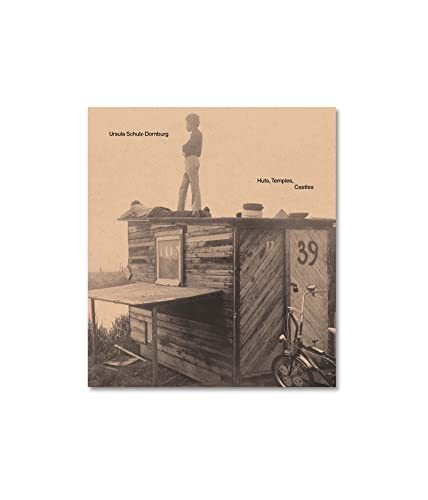
Recently received Huts, Temples, Castles, by Ursula Schulz-Dornburg
4 notes
·
View notes
Text
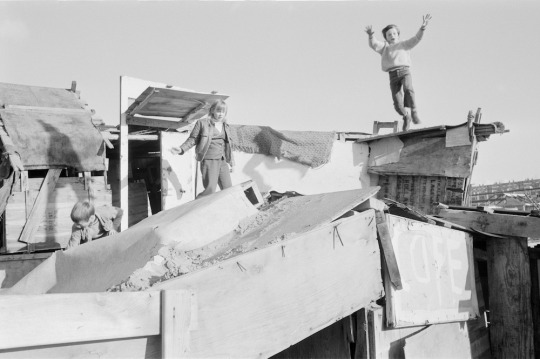
Ursula Schulz-Dornburg explores the ‘Huts, Temples, Castles’ of Amsterdam’s Jongensland
1 note
·
View note
Text
Week 2
Gustavia Le Gray (1820-84), “The Tugboat”, 1856

The photo shows the situation how a steamed-powered tugboat pulled a sailing ship to the port.
I think it is important that the dark smoke from the tugboat is slightly connected to the blurry outlines of dark smokes and clouds because it gives the clear contrast between black smoke colour and the white colour behind the boat and ship which makes us focus on them easily. Additionally, the focus is put in the centre of the photo so that our next focus is gradually expanded to surrounding black dark colours. This is also thanks to the graduation of the colour from the centre to the outer lines.

Ursula Schulz-Dornburg (born1938), “Sonnenstand (‘Position of the Sun’)”, 1992
The series of photo is the sunlight from the window in the upper middle part of each photo. You can see the one window and two doors facing each other. This is about the small residence which can be transformed to the route from Barcelona to Santiago de Compostela. The angle of the series of the photo is all the same, but the focus and how it looks become different depending on the positions the sunlight illuminates on. In the same line, some of the photos look very similar but just a tiny differences in terms of lights give different impressions and looks bright or even dark and gloomy. As I mentioned a lot, I think the sunlight from the window matters and unites these images as a series because it is clear to see the differences and how it moves.
I’m so sorry that I cannot ask anyone to become a model of the homework, so instead I took the photo of bicycle from different angles.
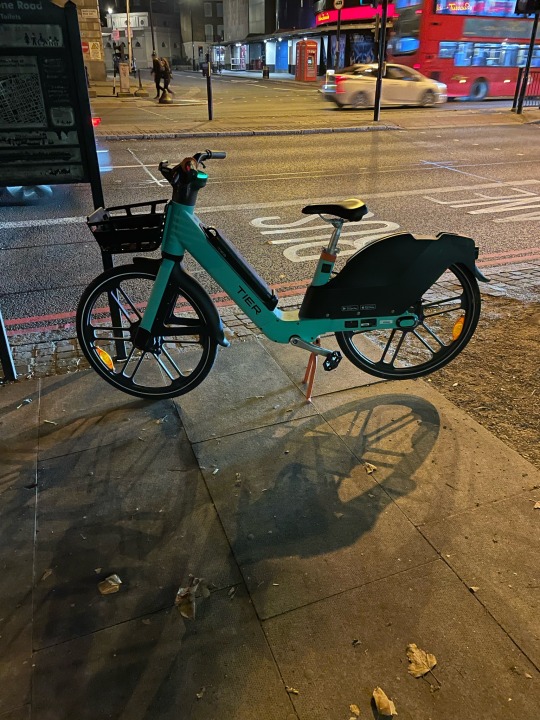
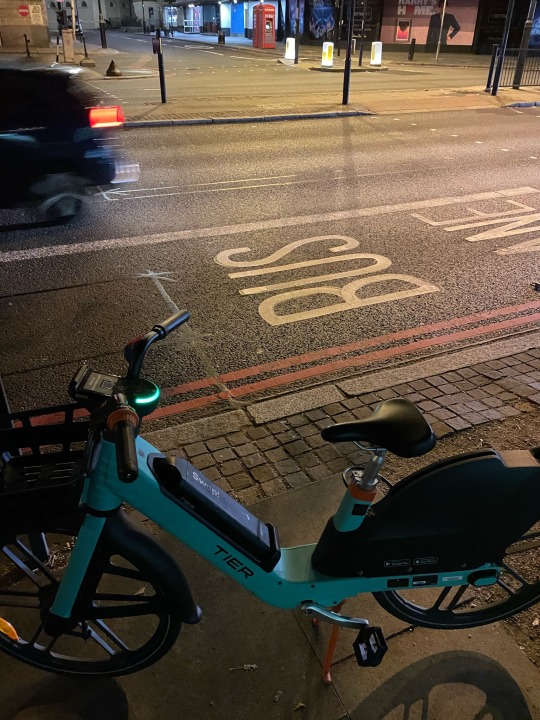


I think the photos taken from different angles can make the impression completely different. How it is illuminated and how the shadows is casted become totally different so that it looks bright, while the other seems mysterious and dark. According to the handout, the photo doesn’t look like distorted if you take from eye level, so it can convey what we see and how it looks as it is. However, I really get attracted by the photo from below because it looks three dimensional and cool. Additionally, the lamp clearly illuminates the street that makes the photo itself and overall view noticeable and understandable obviously. I found it difficult to take the last picture because becoming object by standing the exact spot seems to be strange and I don’t precisely know how to shoot photo. I tried to take a lot but all of them didn’t look that good. However, I think the viewers can understand how quiet and uncrowded it was which enabled them to have the similar feeling and impression from the photo.
0 notes
Text
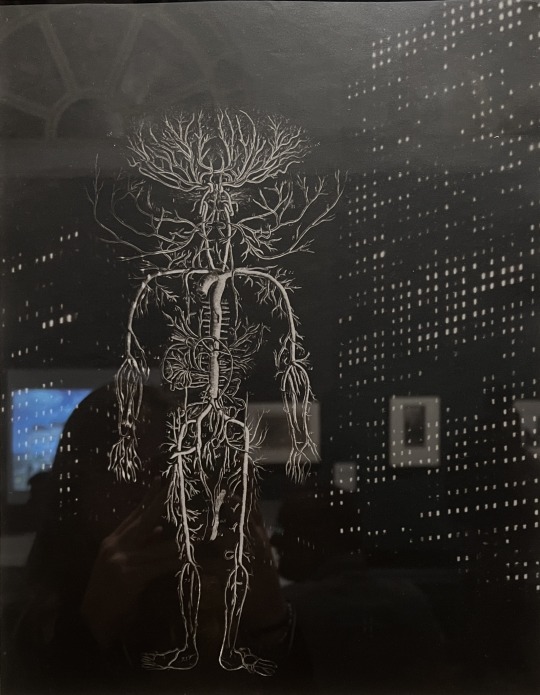

Week 2
When I visited the Victoria and Albert Museum’s Photography Centre, the photograph that stuck out to me the most was Josef Breitenbach’s We New Yorkers. This photo was taken in 1942 and shows an illustration of the human nervous system over two brightly-lit skyscrapers. To me, New York is the most human city on the planet. From the flashiness of the Upper East Side to the rank smell of the Mott Ave subway station, New York City is every ugly and beautiful thing about life. Breitenbach took this photo during World War II while seeking refuge from Nazi Germany. This photo encapsulates beauty in one of history’s darkest points, and illustrates how our minds and bodies are connected to the places we inhabit. Our thoughts, feelings, and perceptions of ourselves and the world around us are what make us human, and this photo shows how vitality exists in physical spaces. The organic shape of the complex nervous system highlights humanism. The use of light from the skyscrapers at night may represent the lives and activities of the city's inhabitants. The juxtaposition of the human nervous system with the cityscape could signify the idea that the city itself is a living, breathing entity composed of its people.
The series of images that I selected is Ursula Schulz-Dornburg’s Sonnenstand (‘Position of the Sun’) taken in 1992. This series of photographs shows twelve photos of the same window at different times of the way with the sunlight shining through. The way that I interpreted this image had a lot to do with time. Digital clocks didn’t always exist and people used to rely on the sun to tell the time of day. Conceptually I think this illustrated the nature of time and the fleeting moments of daylight and the passing of days. This also highlights object permanence. Even though the sun does not shine at certain points, the objects and physical things still stand and still exist even though we cannot see them. I think the use of light is the most important aspect of this series of photographs because it is the main focus, whether it is present or not present. The thing that unites these images is constancy and permanence of the physical structure. It is taken at the same angle each time, just at different points of the day.
0 notes
Photo

Ursula Schulz-Dornburg: Memoryscapes
L’opera fotografica di Ursula Schulz-Dornburg è, purtroppo, di grande attualità alla fredda luce del presente
0 notes
Text
Jongensland
Jongensland is a playground of sorts established in Amsterdam during the mid-1900s, shortly after the Second World War. It came about through a government initiative which sought to provide a play area for children without imposed restrictions or man-made architecture. To make things even more utopian, Jongensland was located on an island.
While it was in use, photographer, Ursula Schulz-Dornburg, captured the huts, structures and dens alongside their adolescent architects. Schulz-Dornburg visited the island in the 1960s and let her own children play there. Despite photographs of children climbing and jumping on their designs (which don’t scream structurally sound), making fire and swinging over it on ropes, Schulz-Dornburg’s photographs of Jongensland have a sense of calm – like things are taking a natural, intuitive order.
The architecture itself is also impressive. Looking at the larger scale constructions, you can see how the children have sometimes tried to imitate traditional typologies such as pitched roofs and the symmetrical placement of windows.
Not to get too negative, but sometimes I forget that architecture can be a kind of imposition that restricts those who encounter or (and worse) live in it. And I forget this downside because architecture can be seductive in both beautiful and practical ways. But when I look at Jongensland, I like to think about how this restriction must have been overcome, with the children arriving on the empty Island and starting from scratch, nailing together the scraps of driftwood that washed up with them. This romantic vision is fueled not only by my wild imagination, but also by Ursula Schulz-Dornburg’s photographs. Her images show the rough materials and hard work that created these structures; but also a deep sense of freedom and independence on the faces of their inhabitants. Looking at the photographs it’s hard to believe Jongensland was real and that many children spent their formative years creating it.
0 notes
Photo
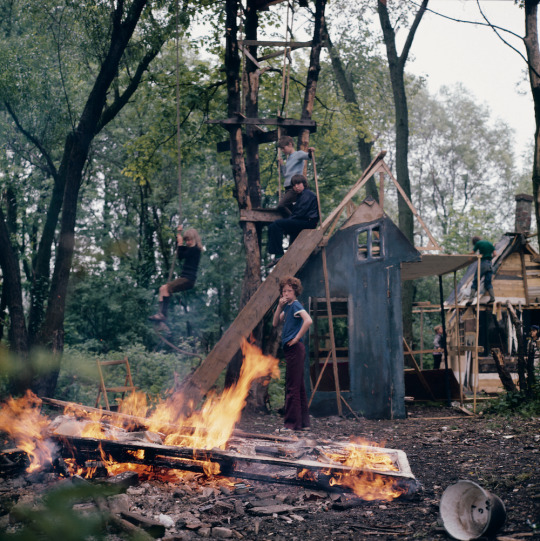
Jongensland (Ursula Schulz-Dornburg: Huts, Temples, Castles)
1 note
·
View note
Photo
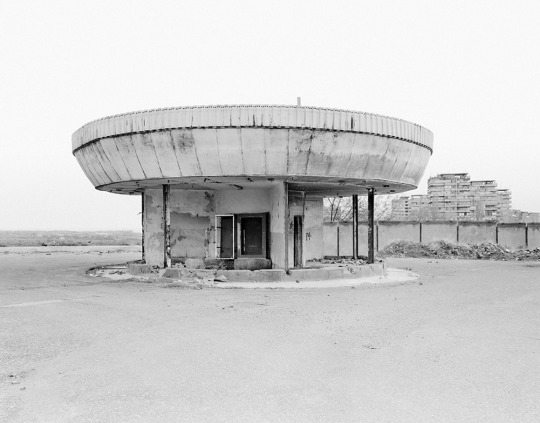



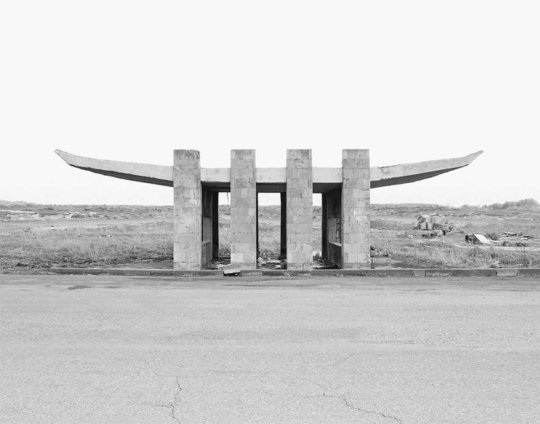
Ursula Schulz-Dornburg
Bus stops. Armenia, 1997 / 2011
Erevan/Goris-Khndsorek/Erevan-Sevan/Abowjan - Aramus/
Gymri-Erevan
schulz-dornburg.info
323 notes
·
View notes
Photo
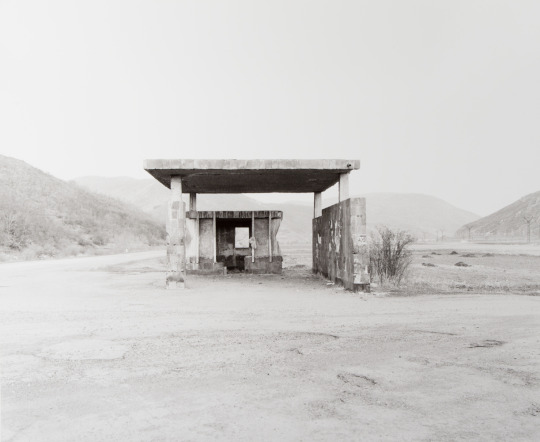
Ereven, Hankavan 16,
Gelatin silver print in white overmat,
13.75 x 16.75 in (34.92 x 42.55 cm)
Ursula Schulz-Dornburg Photography,
Courtesy of Gallery Luisotti and Artist
#art#photography#Black and White#ereven#hankavan#ursula schulz-dornburg#abandoned places#abandoned#urbex#urbexpeople#brutalism#armenia#yerevan#bus stop#soviet-era#minimalism
291 notes
·
View notes
Text

Ursula Schulz-Dornburg
The Land in Between
11 notes
·
View notes
Photo

Ursula Schulz-Dornburg From "Vanished Landscapes" Irak 1980 - 2006
52 notes
·
View notes
Photo

Ursula Schulz-Dornburg, Temple of Baal, Palmyra, 2010.
#Ursula Schulz-Dornburg#Schulz-Dornburg#photography#ruins#architecture#palmyra#palmira#temple of baal#baal#siria#syria
11 notes
·
View notes
Photo

(331)
annasintervals: Gjon Mili; Venetian Curtains (1973) Ursula Schulz-Dornburg.
(via monkeastman); flashofgod:Fan Ho, White tent, 1960.
(via triptychon64)
Visit me on triptych193.wordpress
6 notes
·
View notes